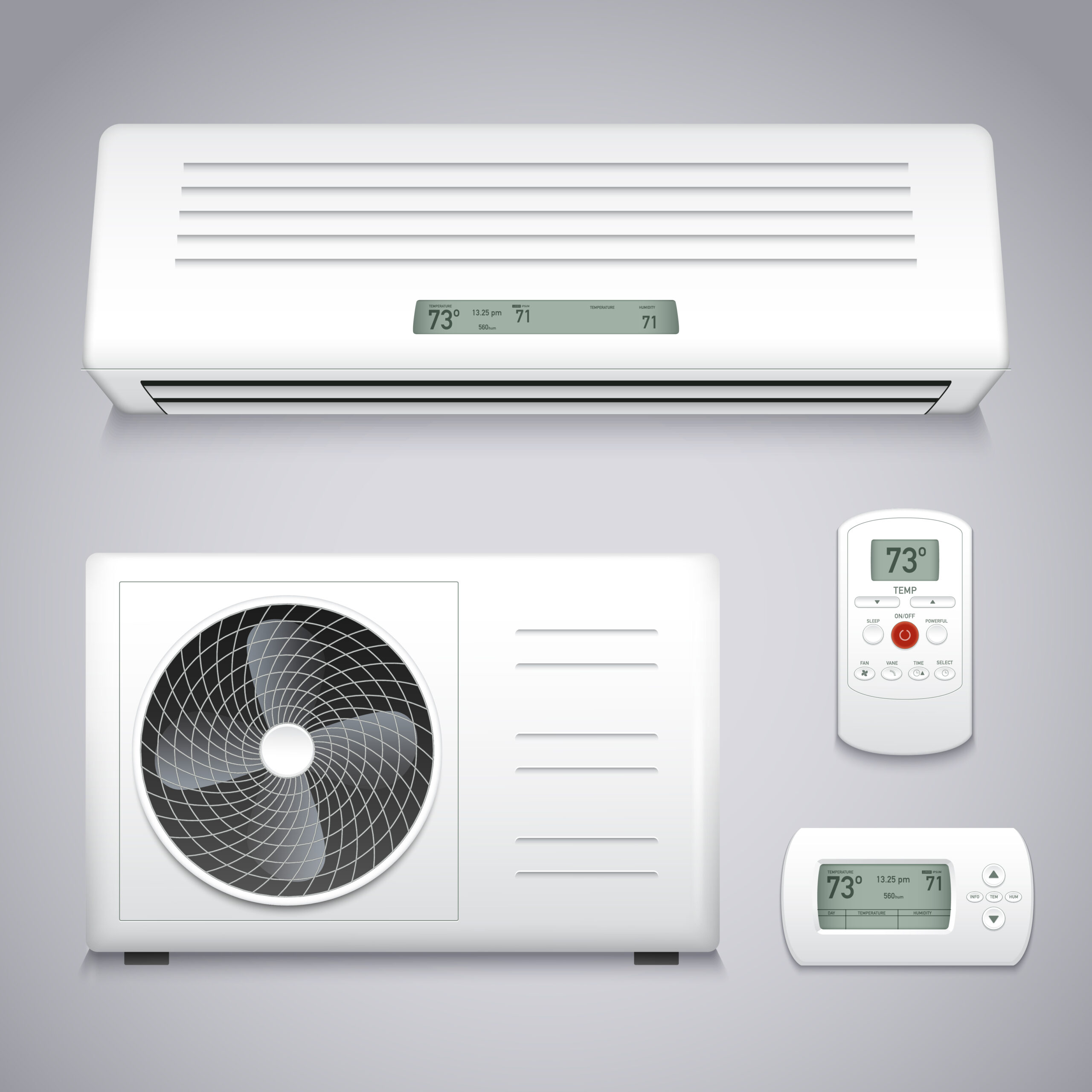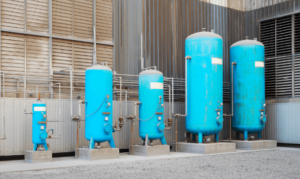
Short Guide To Air Receiver Tanks
By Alfie Birds
- Property , Technology ,
- 14 Aug
Air receiver tanks (commonly referred to as air storage vessels) serve to regulate power pulses and lower noise in compressed air systems, making them essential components of industrial compressor systems.
An adequately sized tank will reduce air pressure fluctuations caused by load/unload cycle times and frequent motor starts, thus cutting energy consumption significantly.

Why use an air receiver?
A receiver tank is at the core of every compressed air system, acting as temporary storage to meet short-term peaks in compressed air demand and helping maximise energy use while prolonging the compressor system’s lifespan.
Air receiver tanks serve as control-pressure storage. Installed downstream of an air compressor’s control pressure signal, they help mitigate dynamic pressure swings found in industrial compressed air systems by evening out demand peaks and decreasing cycle counts; this saves hundreds or even thousands in energy costs annually while decreasing mechanical wear on your compressor motor.
Storage of compressed air in an air receiver tank enables you to provide power for short, high-demand events such as short bursts of sandblasting or dust collector pulses, or for single users taking air directly out of their hose hose—even when your compressor is off! Plus, having air stored away makes for less of a need to run it!
Properly sizing an air receiver tank is key. In general, aim for two or three times your compressor’s Standard Cubic Feet Per Minute rating when selecting fixed and variable-speed drive compressors as your total system capacity. Sizing calculations require taking into account several factors, including the output pressure of the compressor, usage at the point of use, and air system design parameters. Many manufacturers of compressed air equipment provide nomographs to help simplify this process.
An air receiver that is too big will waste energy and cause unstable pressure fluctuations within a compressed air system, leading to excess compressor pressurisation that causes premature wear and failure of its components.
An air receiver tank performs many crucial functions within any compressed air system, including storage. They help regulate compressor controls to prevent over pressurisation and short cycling, which could otherwise cause numerous issues with the compressor itself.
Storage of compressed air
An air receiver tank is an integral component of any compressed air system, serving as temporary storage for compressed air and making the system run more efficiently. These large pressure vessels can hold significant volumes of compressed air for storage purposes while being engineered to handle immense pressures.
Just like water reservoirs, an air receiver tank acts to dampen pulsations from your compressor discharge line, producing an almost uniform air pressure throughout your system. Furthermore, it offers storage to address sudden spikes in demand, creating a buffer against unexpected interruptions to production systems or equipment due to shortages of supply.
An appropriately sized air receiver can help reduce energy costs in your compressed air system by enabling load/offload or fixed speed compressors to operate with tighter pressure bands for extended cycles, thus eliminating unneeded trim compressor starts, cutting energy costs, and prolonging compressor lifespan.
Due to the immense pressure they contain, air receiver tanks should be located in an environment in which they can be secured against accidental impacts or damages. Insulation should also be sufficient in colder climates so as to prevent freezing when necessary, and condensation damage may pose a potential threat.
An air receiver should be fitted with a safety relief valve rated 10% above its maximum working pressure to allow excess pressure to safely escape in case of internal rupture, protecting workers and avoiding property damage or fire. In addition, there should also be a pressure gauge and snubber installed within its confines in case of internal rupture, property damage, or fire.
As well as the safety features already discussed, an air receiver should include a condensate drain valve to drain any build-up of moisture that might lead to corrosion and decrease efficiency. A manual drain may not be suitable; an electric automatic drain can open at predetermined intervals to empty liquid. In addition, installing an air quality sensor could help monitor air purity; these sensors detect moisture, oil, or carbon dioxide that might impact production quality and alert you to problems that might hinder production quality.
Safety
Air receiver tanks store compressed air at high pressure, making proper construction and storage essential to avoiding an accident. A failed tank can produce large pieces of shrapnel that cause considerable damage to equipment, buildings, and people in its path.
Air receivers serve a key purpose by acting as large storage vessels for compressed air, giving the compressor time to rest between cycles as it meets air demand and using less energy to maintain stable system pressure levels.
The ideal location of an air receiver should be near its associated compressor in order to reduce the distance travelled for compression and discharge of end-use air, thereby mitigating temperature fluctuations that may alter its quality. Furthermore, inspection and maintenance should be easily accessible by personnel; any buried units should not be placed where personnel cannot easily gain entry.
After properly situating and positioning an air receiver, it is equally essential to regularly inspect its gauges and valves in order to ensure their correct functioning. Gauges must be drained to avoid liquid accumulation; spring-loaded safety valves should also be set such that working pressure in the receiver does not exceed recommended limits.
Between formal inspections, it’s wise to perform regular checks of the drains and pressure relief valves in your air compressor system to ensure their proper function. If any problems are detected, contact the manufacturer or air compressor system installer immediately for resolution.
Maintenance
While many focus on maintaining their compressor when it comes to air system upkeep, other components that facilitate air supply must also be checked and upkeep regularly, particularly receivers, which store compressed air when demand increases while also helping reduce wear-and-tear and contamination issues in systems.
Air receivers are pressure vessels because they contain large volumes of compressed air in a relatively compact space. Pressurisation exposes this compressed gas to destructive energies, which could potentially cause structural damage, fires, or injuries, so regular draining and inspection for signs of corrosion in this vessel should be conducted to keep its condition under control.
An air receiver should be made of material that can withstand impact and weathering and placed away from equipment that might be damaged by heat radiating off its exterior.
Regular inspection of an air receiver tank for leaks and other issues is also essential to its safe operation. A faulty valve, cracked weld, or loose seal can result in an internal rupture, potentially endangering personnel as it releases large pieces of metal or shrapnel at high speed that could cause considerable damage to nearby equipment and even cause serious injuries or deaths.
An air receiver should be regularly inspected to detect corrosion through visual examination. Other means for assessing its safety and integrity include hydrostatic testing, ultrasonic thickness testing, X-rays, and full pressure tests, performed by qualified inspectors who will also provide detailed reports detailing their findings.




